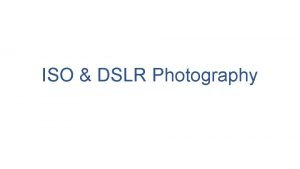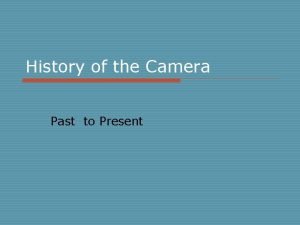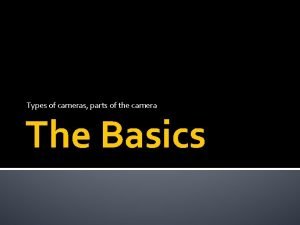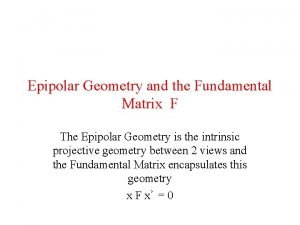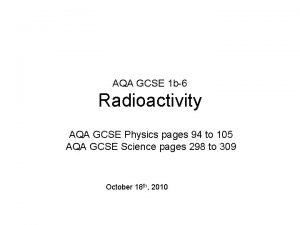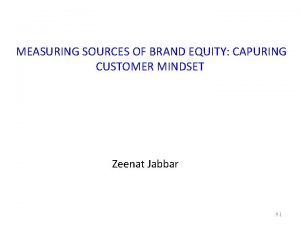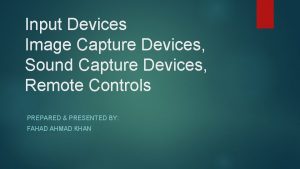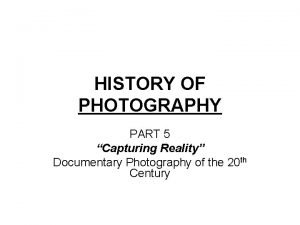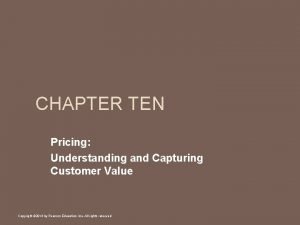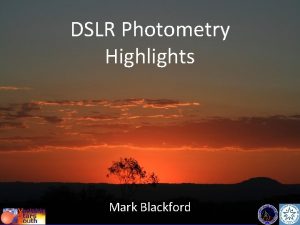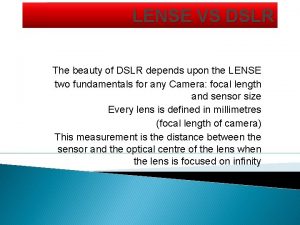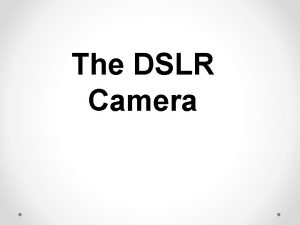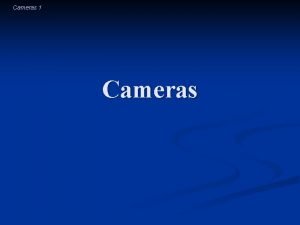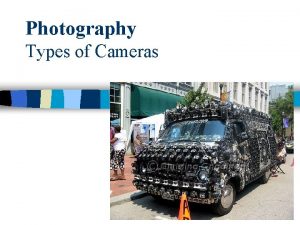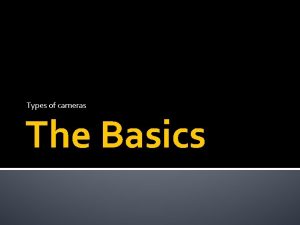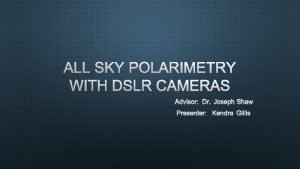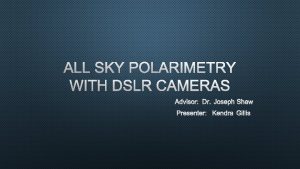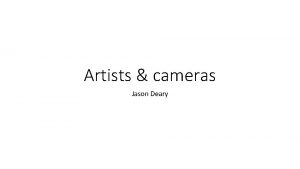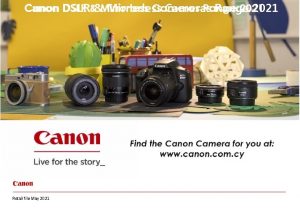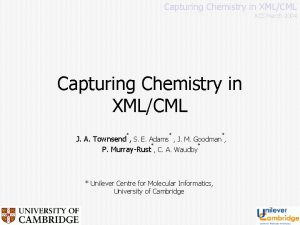Cameras capturing the light Types of Cameras DSLR


















- Slides: 18

Cameras -capturing the light-

Types of Cameras DSLR, Camcorders, high speed cameras, 8 mm, 16 mm film, High resolution, POV, 3 D, Cinema

How cameras work Photography/videography = the capture of light

FOCUS Focus helps create a clear emphasis on the subject matter of the photo/video.

Larger f-stop number = smaller hole/less light (f/1. 4 lets more light through than f/16) Low f-stop number = shallow depth of field High f-stop number = deep depth of field F-stop / Aperture F-stop is the first area where you can control how much light will be captured by the sensor.

Video Explanation of Aperature/Fstop https: //vimeo. com/19603662 Video Explanation of Depth of Field https: //vimeo. com/19603807

Depth of Field

Shutter Speed Effects the “look and feel” of the motion happening within the shot Shutter speed is the amount of time that the shutter stays open. This effects how much light hits the sensor and the amount of motion blur in an image. Fast shutter speeds (greater than 1/60) create sharper individual frames. It can lead to “choppy” and unreal looking motion in the shot. Slow shutter speeds (less than 1/50) create more motion blur within individual frames. It can lead to more organic look. Panning with the action can make an object appear “faster” as in the example of the car below. This image was captured with a fast shutter speed. The motion of the water is “frozen” in time with little or no motion blur present. The images on the left were captured with a slow shutter speed. The motion of the water is blurred, creating a soft look. For this shot the camera was completely still. The image of the car was taken at a slow shutter speed but the camera panned with the action of the car.

Video Explanation of Shutter speed and Frame Rate https: //vimeo. com/19603537

Shutter speed comparison

Sensor The sensor records the light after it passes through the lens, iris, and shutter. ISO controls the sensitivity of the sensor (how much light is absorbed by the sensor)

Color Temperature The color temperature of the lighting in your shot effects how the camera “sees” colors. So you must set the proper white balance within your camera to capture the true color of the scene. White balance tells the camera what color “true white” is and it bases all other colors in relation to that “white”.


Video Capture • SD Cards, CF cards or Internal Flash memory -File - MOV, AVI, WMV, H 264, AVCHD • Tape - mini. DV, HDV, 8 mm, VHS, Beta, DVCpro, DVCAM, etc. . . • Film - 8 mm, super 8 mm, 16 mm, super 16 mm, 35 mm

• File Formats MOV, AVI, MPG, MP 4, M 4 V, WMV, . . . etc. There are hundreds of video file formats, these are some of the more widely used today. COMPRESSION Compression is a balance of file size vs image quality. • • • Side effects of compression: Blocking • Frame rate • Color • Artifacts Noise Softness • Frame Size

Timecode is a signal recorded with your video that uniquely identifies every frame of your tape using a time stamp in hours, minutes, seconds, and frames. 01: 32: 15: 12 hours | minutes | seconds | frames Timecode was invented in the late 1960 s so that computer video editing systems could automatically find specific frames on tape and record editing decisions that could then be performed over and over again.

Progressive vs INterlaced

Progressive vs INterlaced Computer monitors Tube televisions Digital Television Analog television Film and Cinema Smooth looking motion 1 complete frame 2 fields split 1080 p = 1080 lines 1080 i = 540 lines x 2 fields
 What is iso dslr
What is iso dslr Light light light chapter 23
Light light light chapter 23 Into the light chapter 22
Into the light chapter 22 Chapter 22
Chapter 22 Camera past tense
Camera past tense Speed detection of moving vehicle using speed cameras
Speed detection of moving vehicle using speed cameras Cameras parts
Cameras parts A stem and leaf diagram
A stem and leaf diagram Image formation in camera
Image formation in camera Essential matrix
Essential matrix Gamma cameras bbc bitesize
Gamma cameras bbc bitesize Capturing kids hearts four questions
Capturing kids hearts four questions Demand measurement in marketing
Demand measurement in marketing Qualitative research techniques to measure brand equity
Qualitative research techniques to measure brand equity Creating and capturing customer value
Creating and capturing customer value Capturing kids hearts four questions
Capturing kids hearts four questions Image capturing devices
Image capturing devices Capturing reality documentary
Capturing reality documentary Pricing understanding and capturing customer value
Pricing understanding and capturing customer value
